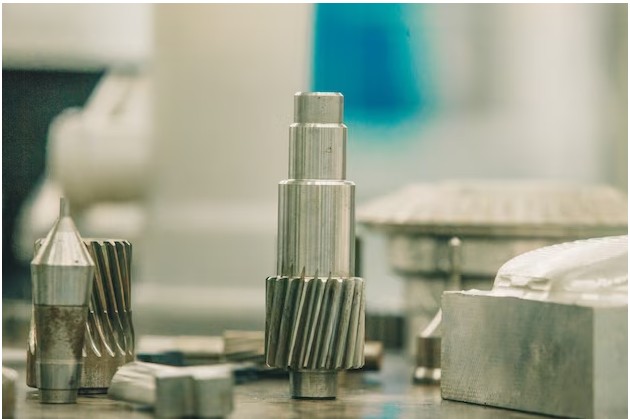Unveiling Success: Implementing Top Methods in Tooling Prototypes for Production

In the realm of manufacturing, the journey from prototype to production is a critical phase that determines the success and efficiency of a product’s lifecycle. Mastering the methods and techniques of tooling prototypes is pivotal in achieving a smooth transition from concept to a fully realized, market-ready product.
The Significance of Tooling Prototypes
Tooling prototypes serve as the bridge between design conception and production realization. These prototypes encapsulate the essence of a product, allowing engineers and manufacturers to test designs, identify potential issues, and refine functionalities before mass production. The methods employed during this phase are fundamental in shaping the final product’s quality, efficiency, and cost-effectiveness.
Optimal Methods in Tooling Prototypes
Design for Manufacturability (DFM): Embracing DFM principles at the prototype stage ensures that the product design is conducive to efficient manufacturing processes.
Manufacturing processes require the highest-quality and appropriate tools to get the best outcome possible. You can check out this website for the best tooling for prototypes. Their tooling prototype experts work with designers and engineers on the necessary tools to manufacture parts, always focusing on sharpness and precision.
By considering manufacturing limitations and ease of production early on, DFM minimizes complexities, reduces production costs, and accelerates time-to-market.
- Advanced Materials Selection: Optimal material selection is crucial in tooling prototypes. Choosing materials that closely resemble production-grade materials ensures more accurate testing of mechanical properties, durability, and aesthetics, leading to better predictions of the final product’s performance.
- Precision Tooling and Molding: Implementing precise tooling and molding methods is pivotal. High-quality molds and tooling ensure consistency in part production, reducing defects and enhancing the overall quality of the final product.
- Rapid Prototyping Techniques: Leveraging rapid prototyping technologies such as 3D printing expedites the creation of prototypes. These techniques allow for quick iterations, enabling designers to test various design versions, refine details, and incorporate changes swiftly.
The Role of Simulation and Testing
Simulation and testing play a vital role in the tooling prototype phase. Finite Element Analysis (FEA) and Computer-Aided Engineering (CAE) simulations allow for virtual testing of prototypes, predicting their behavior under various conditions. These simulations aid in identifying potential weaknesses or inefficiencies, allowing for refinements before physical production begins.
Furthermore, rigorous testing of prototypes in real-world scenarios helps validate designs and functionalities. This stage enables engineers to gather empirical data, assess performance, and fine-tune the product’s features, ensuring it meets or exceeds expected standards.
Efficiency in Scaling to Production
Efficient scaling from prototype to production is a crucial aspect of successful manufacturing. The methods employed during prototyping must seamlessly translate into large-scale manufacturing processes. Advanced planning, optimizing production setups, and leveraging automation wherever feasible are key strategies to ensure a smooth transition.
Collaboration and Iteration
Effective collaboration among multidisciplinary teams is essential throughout the tooling prototype phase. Close interaction between design, engineering, and manufacturing teams facilitates seamless communication, accelerates decision-making, and ensures that feedback from various perspectives is incorporated into the design iterations.
Moreover, embracing an iterative approach is fundamental. Iterative cycles allow for continuous improvement, enabling teams to refine designs based on feedback, iterate rapidly, and ultimately arrive at a production-ready solution that has been thoroughly validated and optimized.
Industry-Specific Applications
The application of top methods in tooling prototypes extends across diverse industries. In the automotive sector, for instance, tooling prototypes play a crucial role in developing and validating vehicle components. Advanced tooling techniques aid in creating molds for intricate parts, facilitating the production of durable and high-performance components.
Similarly, in the consumer electronics industry, precision tooling methods enable the creation of prototypes that accurately replicate final product specifications. This allows for thorough testing of functionality, fit, and assembly, ensuring that the end product meets customer expectations for quality and performance.
Addressing Production Challenges
Challenges in production, such as minimizing lead times and reducing production costs without compromising quality, are effectively addressed by implementing top methods in tooling prototypes. Rapid prototyping techniques, coupled with advanced materials, streamline the design iteration process, enabling faster modifications and reducing time-to-market.
Moreover, precision tooling and molding methods minimize defects and improve the reproducibility of parts, ensuring consistency in quality across production batches. This quality assurance translates into cost savings by reducing rework and waste during manufacturing.
Future Trends and Innovations
Looking ahead, the future of tooling prototypes is shaped by technological advancements and evolving industry demands. Additive manufacturing continues to revolutionize tooling by enabling the creation of complex geometries and customized molds with unprecedented precision.
The integration of artificial intelligence (AI) and machine learning algorithms is poised to optimize tooling processes further. Predictive modeling and process optimization through AI-driven insights will enhance efficiency and accuracy in tooling design and production.
Sustainability in Tooling Prototypes
- Another emerging trend in tooling prototypes is the emphasis on sustainability. Material selection focused on eco-friendly and recyclable options aligns with the growing demand for environmentally conscious manufacturing practices.
- Sustainable tooling methods aim to reduce the environmental footprint while maintaining high-quality production standards.
- By continually refining and embracing these top methods, manufacturers pave the way for a future where innovation meets sustainability, efficiency meets precision, and every product brought to market is a testament to the commitment to excellence in manufacturing.
- Mastering the art of implementing top methods in tooling prototypes isn’t just about creating prototypes; it’s about engineering the future—a future where products are not just manufactured but crafted with precision, sustainability, and innovation at their core.
Conclusion:
The implementation of top methods in tooling prototypes is a linchpin in achieving manufacturing excellence across industries. These methods, ranging from advanced design considerations to precision tooling techniques and future-focused innovations, collectively define the trajectory of product development and production efficiency.




